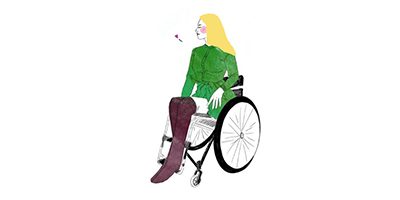“If you can breath, you can do yoga.” This is one of the awesome quotes Mary-Jo Fetterly likes to share when she’s teaching yoga. A yoga teacher for over 20 years and an adaptive yoga teach for nearly 10, Mary-Jo, of Vancouver, Canada, came upon the world of spinal cord injuries from a skiing accident 10 years ago.
Since her accident, she’s decided to look at her injury as a project in healing, something her background in natural therapeutics could potentially heal. Initially a C4-6 ASI A complete spinal cord injury, Mary-Jo’s techniques have helped her regain use of her arms and even her hands, when doctors were sure it was impossible. Read on for her incredible story

